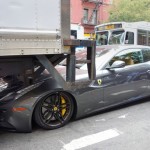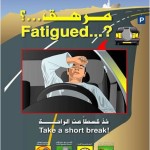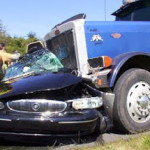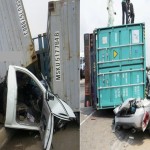
Introduction
On a single fact-finding trip to the Distribution Centre and Loading Bay of a major Manufacturing Company located somewhere in Lagos, Nigeria, the following notes were taken bearing in mind the issue that is about to be discussed in this paper:
Two trucks had rammed their cabin into the height restraint bar located just before accessing the loading bay. Reason, drivers had made to go in hood first as against the customary rear-end entry
About eight trucks have had some form of collisions that had resulted in damages ranging from loss of headlamps, severe dents, broken front grilles/hood/fenders to shattered front windscreen. One in fact lost a tyre.
Two trucks had brought down the carb constructed to indicate the point of turning into the trailer park. Both trucks had their fenders completely battered while one had half the engine shattered.
Similarly, a couple of years back, somewhere within the Apapa axis of Lagos, a petroleum tanker while being backed up to properly position for a loading operation at a major petroleum tank farm knocked out a couple of loading apparatus. There was a spark and then a conflagration. The resultant destruction of lives and properties was monumental. The owners of the fuel tanker never recovered from that experience!
The above appropriately captures the magnitude of damages that occur within the parking lot. It has in fact been stated that two-thirds of a fleet’s collisions happen in a parking lot and most often than not involve a fixed or stationary object.
In this paper, our discussion shall be on what you need to begin to do to save your business the huge economic loss associated with parking lot and backing collisions. But first, we will look at what parking lot and backing collision is all about.
Fixed and Stationary Object Collisions
Many a time, you probably would have wondered, what in this world would have made your driver hit something that is sitting still in plain sight! He’s not medically imbalanced; neither have any of his faculties been found to be impaired. The mirrors, windshield, windows, brakes, lights and steering wheel are all functional. So what the hell could have made him hit a stationary object in a very spacious and open place?
The Root Causes: Rushing and Distraction
Whether it is a fixed object, stationary object or backing collision, these types of crashes are often caused by fleeting/momentary loss of concentration by driver or the pressure to secure slots ahead of other peer drivers on the queue. The truth of the situation is that drivers are under severe pressure to not just meet delivery timelines or schedules set by the client waiting to receive cargo, they are also pressured by the drive to meet target deliveries per week and per month as set by their organisation. Add to this the need to also meet personal targets with a view to ramping up as much trip allowance as possible. The combination of these variables often leads to drivers’ inattention or rushing.
And don’t even think that this removes from other pressures that we all as human beings striving to survive do face on a day-to-day basis. Pressures of a sick kid, relationship going awry, tough financial situations, an annoying neighbor, unfair treatment by superiors etc. – and it’s easy to understand how they feel rushed and pressured. That leads to distraction and fatigue.
Fixed Object Collisions Vs. Backing Collisions
The distinction between fixed object collisions and backing collisions could be very fuzzy, but there is a difference notwithstanding. A fixed object collision most commonly refers to collisions where the truck was in drive and moving forward when it hit with a fixed, immobile or stationary object. In contrast, a backing collision refers to any type of collision when the truck was in reverse and backing. In any case, the backing collision could as well result in the felling of a stationary object.
Other Vehicles and Awnings
For long haul heavy duty trucks, the common types of collusions involve other trucks, other vehicles, carbs and low clearance awnings while for medium truck fleets, the two most common types of collisions involve other vehicles or trailers (stationary objects) and low clearance awnings (fixed objects). Despite the slow speeds in a parking lot, the size and weight of HDT trucks can cause significant damage to anything they hit. It’s estimated that the forward-moving fixed and stationary object accidents can account for 40% or more of a fleet’s total annual collisions.
Backing Collisions
Backing accidents with a fixed or stationary object are always considered 100% preventable. Most backing accidents will occur within or in the immediate area of a parking lot. They account for about 30% or more of a fleet’s total annual collisions. This easily brings the total potential for parking lot collisions up to 70% of the annual collisions for medium truck fleets.
Common Backing Crashes
While we classify backing accidents separately from fixed/stationary object collisions, they can and often do involve fixed or stationary objects. Medium trucks most often back into other vehicles, especially passenger vehicles. The next most frequent collision is with narrow objects like poles that can be difficult to see. Finally, low-clearance awnings get torn off buildings when drivers misjudge their height or simply don’t look for them.
We shall be discussing the soft and hard costs associated with both parking lot and backing collisions in our next instalment on this exciting series. We will also consider the various measures that you can adopt to ensure that your company is adequately immuned against this recurring decimal in the haulage business.






